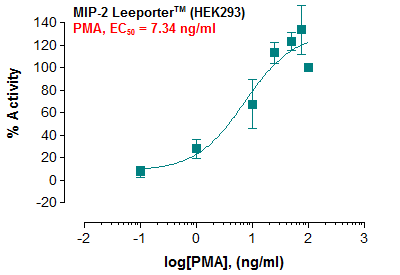Recombinant Human PAF-AH/PLA2G7 (C-6His)
Shipping Info:
For estimated delivery dates, please contact us at [email protected]
| Amount : | 50 µg |
| Content : | Supplied as a 0.2 µm filtered solution of 20mM HAc-NaCl, 150mM NaCl, 10% Glycerol, pH 4.5. |
| Storage condition : | Store at -20°C, stable for 6 months after receipt. Please minimize freeze-thaw cycles. |
| AA sequence : | FDWQYINPVAHMKSSAWVNKIQVLMAAASFGQTKIPRGNGPYSVGCTDLMFDHTNKGTFLRLYYPSQDNDRLDTLWIPNKEYFWGLSKFLGTHWLMGNILRLLFGSMTTPANWNSPLRPGEKYPLVVFSHGLGAFRTLYSAIGIDLASHGFIVAAVEHRDRSASATYYFKDQSAAEIGDKSWLYLRTLKQEEETHIRNEQVRQRAKECSQALSLILDIDHGKPVKNALDLKFDMEQLKDSIDREKIAVIGHSFGGATVIQTLSEDQRFRCGIALDAWMFPLGDEVYSRIPQPLFFINSEYFQYPANIIKMKKCYSPDKERKMITIRGSVHQNFADFTFATGKIIGHMLKLKGDIDSNAAIDLSNKASLAFLQKHLGLHKDFDQWDCLIEGDDENLIPGTNINTTNQHIMLQNSSGIEKYNVDHHHHHH |
Source: Human Cells.
MW :48.8kD.
Recombinant Human Platelet-Activating Factor Acetylhydrolase is produced by our Mammalian expression system and the target gene encoding Phe22-Asn441 is expressed with a 6His tag at the C-terminus. Platelet-Activating Factor Acetylhydrolase (PAFAH) is a secreted enzyme which belongs to the AB hydrolase superfamily and Lipase family and catalyzes the degradation of platelet-activating factor to biologically inactive products. PAFAH is produced by inflammatory cells and hydrolyzes oxidised phospholipids in LDL. PAFAH has been implicated in the development of atherosclerosis and has also been identified as a marker for cardiac disease. PAFAH might have a major physiologic effect in the presence of inflammatory bodily responses. PAFAH alters the action of PAF by hydrolyzing the sn-2 ester bond to yield the biologically inactive lyso-PAF. PAFAH has specificity for substrates with a short residue at the sn-2 position.
MW :48.8kD.
Recombinant Human Platelet-Activating Factor Acetylhydrolase is produced by our Mammalian expression system and the target gene encoding Phe22-Asn441 is expressed with a 6His tag at the C-terminus. Platelet-Activating Factor Acetylhydrolase (PAFAH) is a secreted enzyme which belongs to the AB hydrolase superfamily and Lipase family and catalyzes the degradation of platelet-activating factor to biologically inactive products. PAFAH is produced by inflammatory cells and hydrolyzes oxidised phospholipids in LDL. PAFAH has been implicated in the development of atherosclerosis and has also been identified as a marker for cardiac disease. PAFAH might have a major physiologic effect in the presence of inflammatory bodily responses. PAFAH alters the action of PAF by hydrolyzing the sn-2 ester bond to yield the biologically inactive lyso-PAF. PAFAH has specificity for substrates with a short residue at the sn-2 position.
Endotoxin : Less than 0.1 ng/µg (1 IEU/µg) as determined by LAL test.
For Research Use Only. Not for use in diagnostic/therapeutics procedures.
| Subcellular location: | Secreted |
| Tissue Specificity: | Plasma. |
| BioGrid: | 113667. 2 interactions. |
|
There are currently no product reviews
|














.png)








